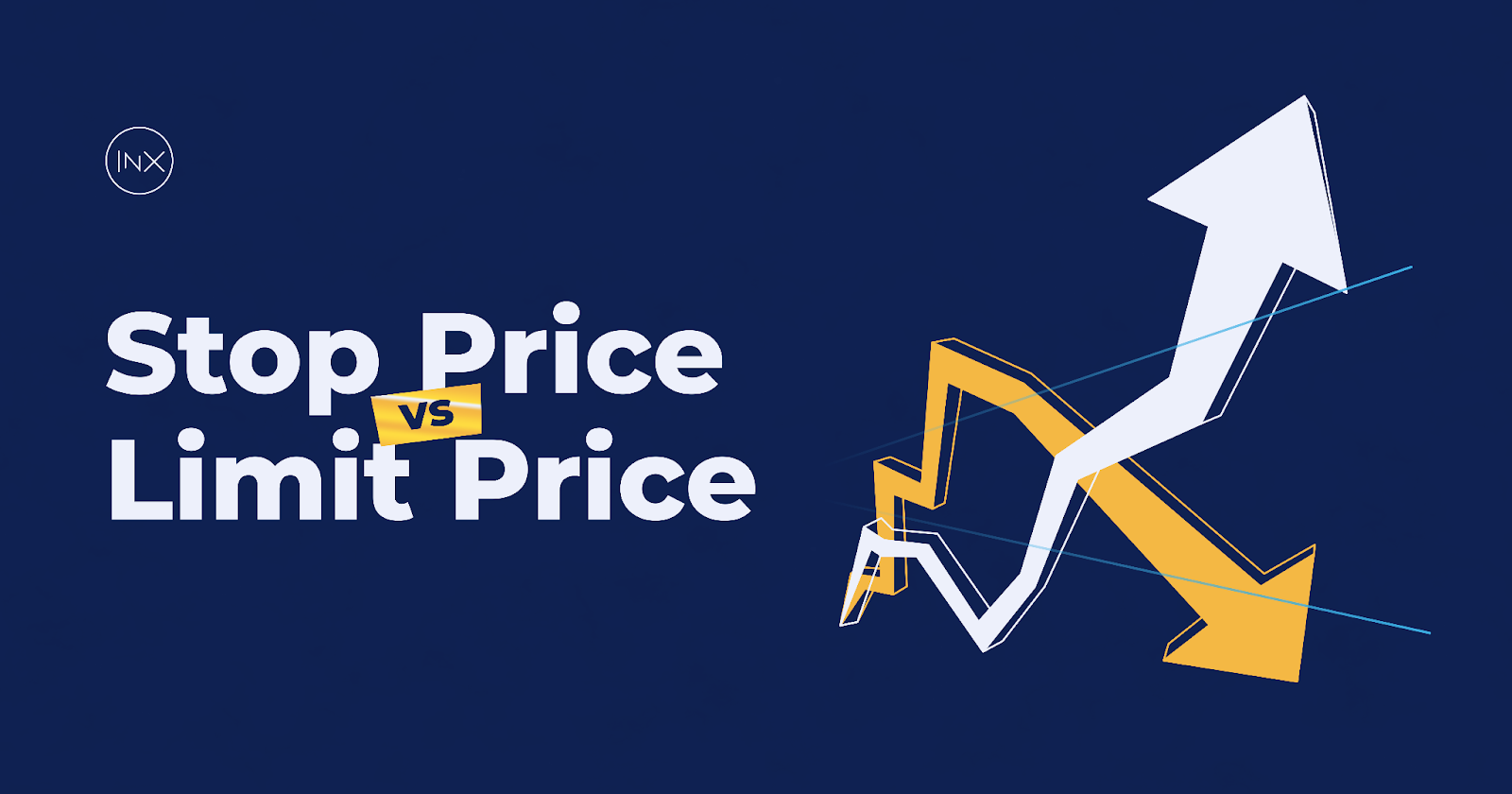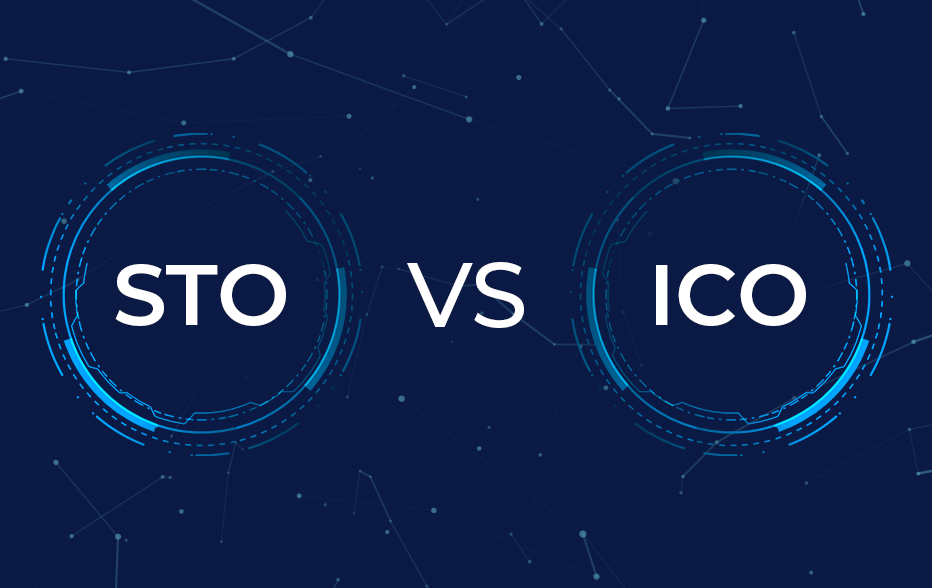Stop Price Vs Limit Price: Understanding Order Types in Cryptocurrency Trading

Stop and limit prices are important trading tools you can use to control and protect your trading positions against sudden market movement. While they are similar, the stop price and limit price are quite different. In this article, we explain how the Stop Price and Limit Price work, their differences, and how to use them when trading.
What is a Stop Price?
A Stop price order (also stop-loss order) is an automatic trade set to buy or sell your crypto once the market price reaches a particular price known as the “stop price.” Stop prices are designed to help traders limit potential losses by automatically executing a trade at specified price levels.
Due to how it works, stop price is valuable in volatile market conditions when prices fluctuate rapidly and there is a higher risk of substantial losses. For example, you can set a stop price below the current market price during market downturns or sudden price declines. This helps to protect your position against significant losses should the market move against you suddenly.
Stop price is also valuable for managing risk when trading highly volatile assets or engaging in short-term trading strategies. You can establish predefined stop-loss levels based on risk tolerance and market analysis to maintain discipline and protect your capital from excessive drawdowns.

How Does Stop Price Work?
A stop price order buys or sells at the market price after the market price breaks through a specific price. Your stop price order will become a traditional market order when the market price gets to the stop price.
You can set a sell-stop order, sometimes called a “stop loss” or a buy-stop order. A sell-stop order is set below the market price and can help protect an unrealized gain or minimize loss. The sell-stop order is only triggered to become a market price when the market price drops below the stop price. Here is a simple example to explain how a sell-stop Price Order works.

Imagine you’re a trader who owns Bitcoin (BTC) and wants to protect your investment from significant losses in case the price of BTC starts to decline. The current market price of Bitcoin is $52,000, but you’re concerned that the price will drop below $45,000, which is a significant support level. If the market price drops below this price, it may continue to decline further for a while, and you may lose more money than you’re comfortable with.
To potentially avoid this, you can set a stop price (stop-loss) at $45,000; your order remains inactive as long as the BTC price remains above $45,000. To do this, you log into your crypto exchange account and set the details of your stop price order, including the quantity, say 0.5 BTC, and the stop price ($45,000).
In this case, you’re saying sell 0.5 BTC when the price drops to $45,000 or below. There are two possible outcomes in this case:
- The market price of Bitcoin drops below $45,000 to $44,000. Your sell-stop order is triggered, and you sell your Bitcoin at the available market price $44,000, to minimize further losses.
- The market price of Bitcoin does not reach $45,000. Your sell-stop order remains pending and is not executed; you continue to hold onto your Bitcoin.
In this example, the stop price of $45,000 acts as a safety net to protect your investment in Bitcoin. It automatically triggers a sell order if the price of Bitcoin drops to a predetermined level, allowing you to limit potential losses and manage risk effectively in volatile market conditions. However, it doesn’t mean you will sell your 0.5 BTC at $45,000. If there is a sudden drop to $40,000, your 0.5 BTC might be sold at $40,000.
On the other hand, a buy-stop price is set at a price above the current market price to protect a short position or get into the market before the price gets higher. In our example, if the reverse is the case and you think the BTC price will increase significantly if it passes $60,000, which is a significant resistance level. You can set a buy-stop order at $60,000 to buy BTC when the price passes that price. If the price doesn’t reach $60,000, your buy-stop order remains pending and is not executed.

Note that the sell stop order (stop loss) or buy stop order doesn’t mean you’ll sell or buy close to the stop price. A price gap occurs when the market price sharply increases or decreases without any recorded trade in between. In this case, the stop price order is fulfilled significantly below or above the stop price.
What is a Limit Price?
A “limit price order (limit order)” is an automatic order set to buy or sell your crypto with a restriction, which can be the maximum price to be paid for (buy limit) or the minimum price to sell for (sell limit).
Unlike stop price, limit price gives you more control over the price at which your trades are executed. A primary advantage of limit price is its ability to secure favorable entry and exit points since limit price only allows buying or selling at a specified or better price.
This makes it easy to implement certain trading strategies like breakout or trend-following. You can enter or exit your positions by setting limit orders at key support levels or resistance prices to capitalize on potential price pullbacks to enter the market or sudden price increases to lock in profit.

How Does a Limit Price Work?
When you set a limit price, you have a specific price in mind you’re willing to pay to buy or accept to sell your crypto asset. It is more like you’re setting a boundary for your trade to secure the best entry or exit point possible; the order is fulfilled at that price or better.
Limit orders are usually executed on a first-come, first-served basis. This means that the orders ahead are completed before yours. So, your order may not be fulfilled if the price becomes unfavorable before your order is executed. But it is possible to buy at a lower price or sell at a higher price than your limit price.
When you set a sell-limit price , it simply means you won’t accept anything less than the specified price for your asset (minimum price). For example, you think the price of Bitcoin will touch $60,000 before it pulls back. You can set a limit price to take profit at $60,000 or more. When you set the limit order, say 0.2 BTC, at $60,000, the exchange registers your order in its system, which remains pending until the price reaches $60,000.
If the price reaches $60,000, your sell limit order is triggered, and the exchange automatically executes your order at $60,000 or above. But if the price pulls back to $58,000 before your order is completed, your order remains pending and is not executed.

A buy limit price is the maximum you will pay to buy a crypto asset. For example, you think the BTC price will pull back to $45,000 before it continues its upward trend. So, you set $45,000 as the buy limit price, i.e., you can only pay $45,000 or lower to buy BTC. Your order is fulfilled only if the price drops at $45,000 or lower.
Stop Price Vs. Limit Price: What are the differences?
The major difference between a Stop Price and a Limit Price is its execution trigger. The stop price acts as the parameter that triggers the stop order; it is not necessary for the order to be fulfilled at that price. The stop order is executed at the next available market price, even if it is unfavorable. On the other hand, a limit price sets the price for the other and executes at that price or better. So, it remains pending if the market becomes unfavorable after touching the limit price.
Once triggered, stop orders become market orders executed at the available market price. In contrast, limit orders specify the exact price at which the trader is willing to buy or sell and may not be executed if the market does not reach the specified price.
Stop price orders are primarily used for risk management – minimizing losses or protecting profits — whereas limit orders are used to enter or exit positions at predetermined price levels. Limit orders give traders more control over trade execution and are commonly used to secure favorable entry or exit points, especially in volatile or illiquid markets.

Stop Price Vs. Limit Price: Choosing the right order type
Stop Price and Limit Price orders have significant advantages and disadvantages. An important thing most people consider before using any of the two is when to use a stop price order and when to use a limit price order.
The answer to the “when to use the different order types” depends mostly on:
- your trading goals;
- current market conditions, and
- your risk tolerance.
A stop-price order may be more appropriate for managing risk and protecting against sudden price movement in volatile market conditions. Limit price orders are better for calmer market conditions, where traders can afford to wait for their desired price levels to be reached.
Your primary trading goal is also an important factor to consider when making your decision. If you aim to limit potential losses, stop-price orders are more suitable. But, if you want to secure the best entry or exit points aligned with your trading goals, a limit price order will work better for you.
Your risk tolerance should also play a role in your choice of order type As a low-risk trader, a stop price order might be better for you to minimize potential losses. More aggressive traders may prefer to use limit price orders to seek higher profit potential.
What if you combine both Stop Price and Limit Price in one trade?
The Stop-Limit Price Order combines elements of both the stop-price and limit-price orders. In the next section, we explain how a stop-limit works.

What is a Stop-Limit Order?
A Stop-limit order is a conditional trade that combines a stop price with a limit price so you can control precisely when your order should be filled. The stop price is the price at which the stop-limit order becomes active and triggers the order to become a limit order.
It works similarly to a traditional stop price order, where the order becomes active once the market price falls below the stop price for a buy stop-limit order or rises above the stop price for a sell stop-limit order.

Once the stop price is triggered, the stop-limit order converts into a limit order, which specifies the price at which the trade should be executed. This limit price sets a boundary for the maximum or minimum price at which you’re willing to buy or sell the asset.
For example, Let’s say you want to buy Bitcoin (BTC), but only if the price continues to rise after a specific price ($60,000). You could use a buy-stop-limit order with the following parameters:
- Stop Price: $60,000
- Limit Price: $63,000
This means that if the price of Bitcoin reaches or exceeds $50,000 (the stop price), your stop-limit order becomes active. Once active, it converts into a limit order with a price limit of $51,000. So, you’re willing to buy Bitcoin, but only if the price starts to rise and reaches $50,000, and you’re willing to pay up to $51,000 for it.

Similarly, for a sell stop-limit order, if the price of Bitcoin falls to or below the stop price, the stop-limit order becomes active and converts into a limit order to sell Bitcoin at or above the specified limit price.
How to Use Stop Price and Limit Price during Crypto Trading
Stop price and limit price can help you manage your risk, secure favorable entry or exit points, and execute your trading strategies precisely in crypto trading. The best part is that you don’t need any complicated steps to set them. Regulated platforms like INX make it easy for you to set your trade orders without any stress.
You can usually create a stop or limit order within a few moments without a problem. In this section, we will show you how to set a limit price or stop price order on INX.
How to Set Stop Price and Limit Price on INX
INX is a US-registered crypto trading and exchange platform known for its regulatory compliance and user-friendly interface. When you trade on INX, you get the full crypto experience but with the regulation and security of traditional finance.
INX.one supports both Stop Price and LImit Price as conditional orders. For the Stop Price option, you can set the order as either a Stop-Market or Stop-Limit Order. The Stop-market option lets you set a normal stop order that turns into a market order when the stop price is triggered. On the other hand, the Stop-limit order is converted into a limit order executed at the specified price or better.

How to Set Limit Order on INX
INX supports both buy limit and sell limit price orders for traders. To set your limit orders, navigate to your trading terminal and Choose Buy or Sell. Your limit price is the maximum price you want to buy or the minimum price you want to sell. After setting your trigger price, add the quantity you want to buy or sell. The last step is to confirm your order, which will be recorded in the order book.
Note that your order will remain pending if it can’t be fulfilled at a favorable market price before the price moves away from the market price.


How to Set Stop Market Orders on INX
You can set both the buy-stop market and sell-stop market orders on INX. For both, you need to set your Stop price, which is ideally higher than the market price for a buy order and lower than the market price for a sell order. After that, input the amount of BTC you want to buy or sell and confirm your stop price order.


Note that your transaction will remain pending until the market price reaches the stop price. Once triggered, the order becomes a market order and is fulfilled at the next available market price.
How to Set Stop Limit Orders on INX
Stop Limit requires you to set a stop price (trigger price) and limit price. The stop price is what triggers the stop limit order to become a limit price order. As a limit price order, the order is executed at the specified limit price or better just like how a limit order works.
To set your stop limit order, select the “Stop” option and choose Stop Limit. From there, set your stop price (the trigger) and your limit price. Confirm the order to finish setting up your order.


FAQ
- What is a stop price in crypto trading?
A stop price, also known as a stop-loss price, is a predetermined price set by a trader to trigger the automatic execution of a trade. It is typically used to limit potential losses by exiting a position if the market moves against the trader’s expectations.
- What is a limit price in crypto trading?
A limit price is a specific price set by a trader at which they are willing to buy or sell an asset. It acts as a boundary, ensuring that trades are executed at the specified price or better. Limit orders provide traders with control over trade execution and help secure favorable entry or exit points.
- When should I use a stop-price order?
Stop price orders are typically used to limit potential losses or protect profits by automatically exiting positions if the market moves against the trader’s expectations. They are commonly employed as part of risk management strategies or in volatile market conditions.
- When should I use a limit price order?
Limit price orders are used to enter or exit positions at specific price levels, ensuring that trades are executed at favorable prices. They are often used to secure precise entry or exit points, minimize slippage, and exercise greater control over trade execution.
- Are there any risks associated with using stop price and limit price orders?
While stop-price and limit-price orders offer benefits, there are also risks involved, such as the possibility of market gaps, slippage, and order execution at unfavorable prices. You should carefully consider market conditions and order parameters when using these types of orders.
- How do I decide between a stop price and a limit price order?
The choice between a stop price and a limit price order depends on your objectives, risk tolerance, and market conditions. Stop price orders are used for risk management and exiting positions, while limit price orders are used for precise entry or exit points.
The INX Digital Company INC February 29, 2024
The INX Digital Company inc. is an expert in the field of finance, crypto and digital securities.





